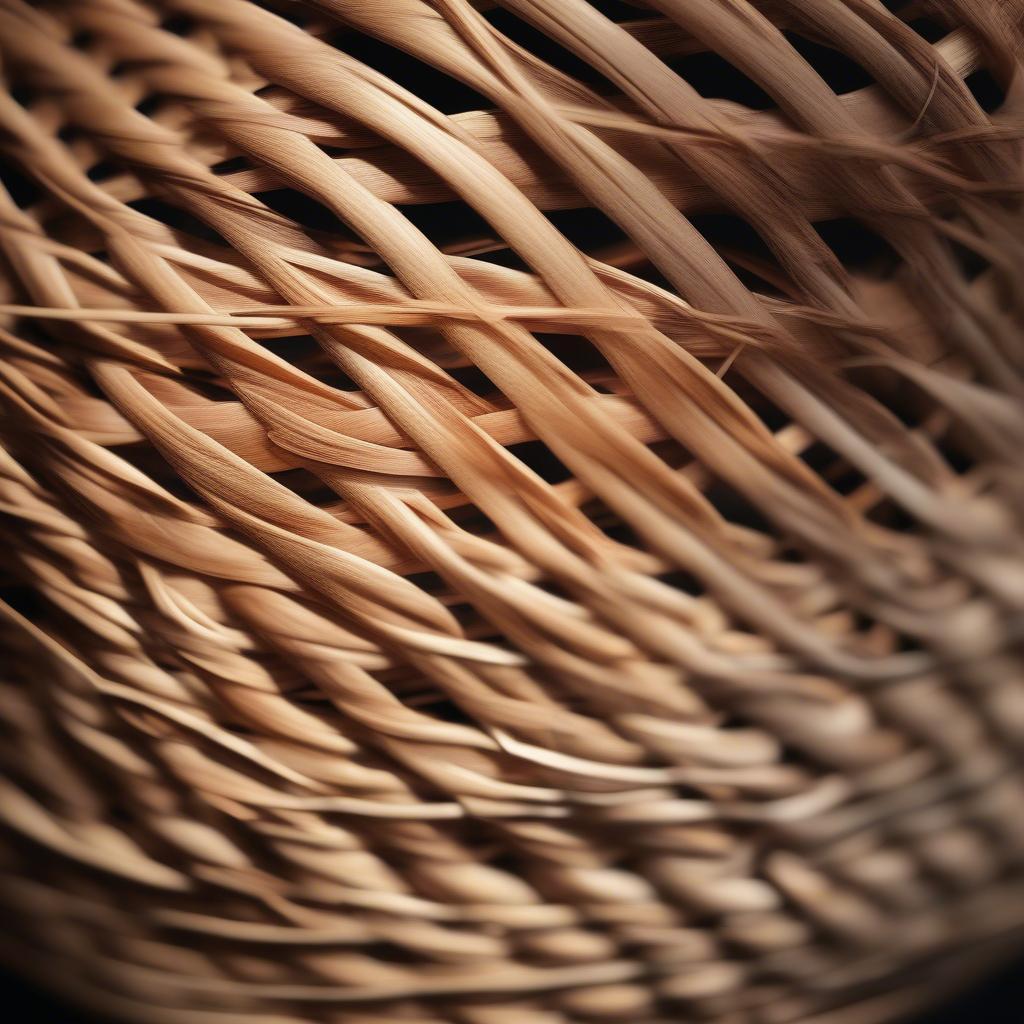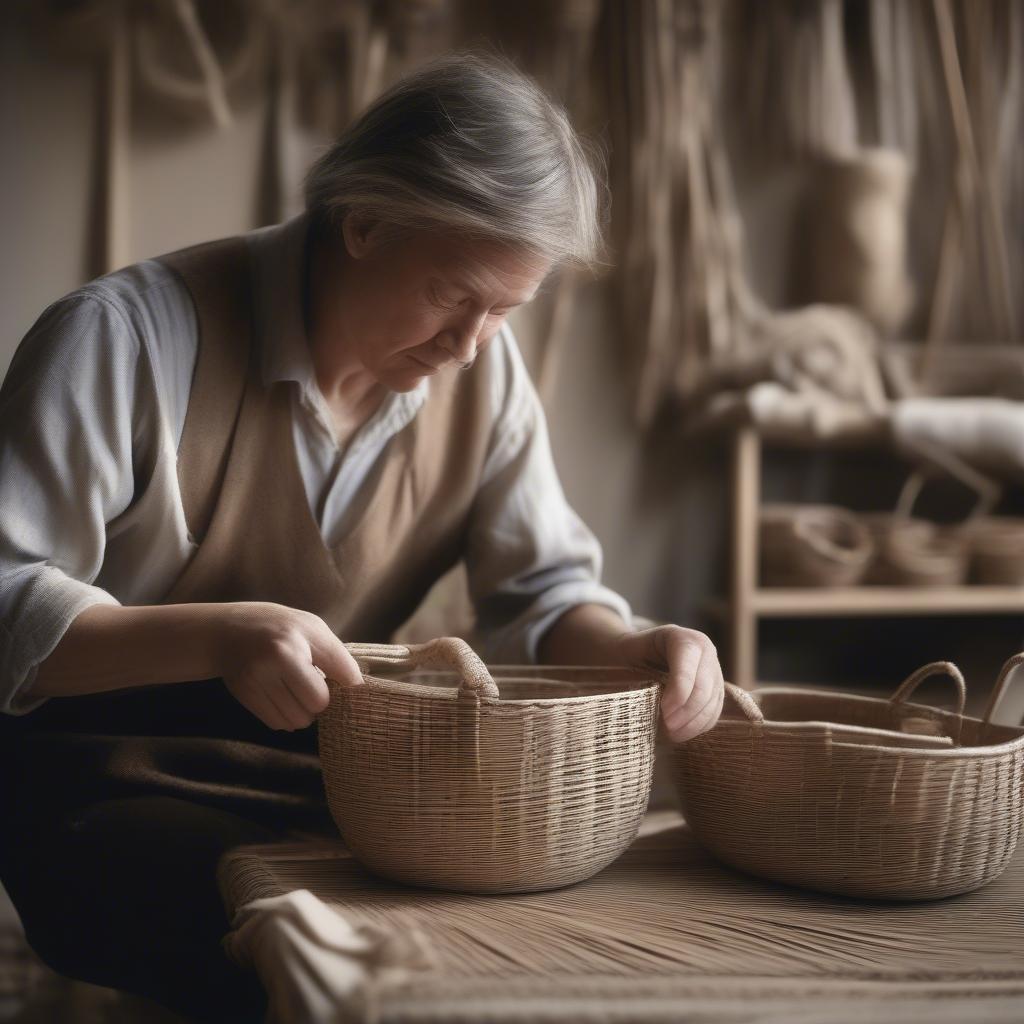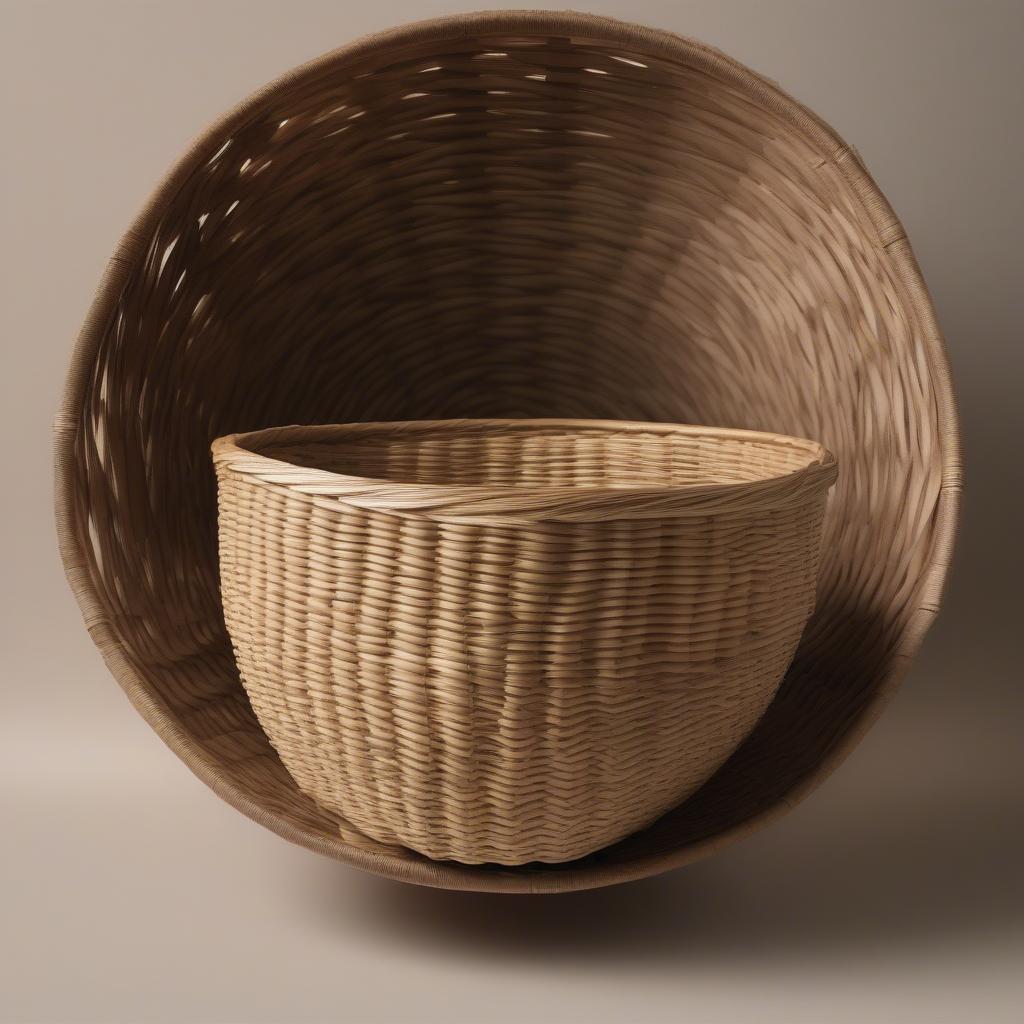Basket Weaving
The Art of the “God Mistake” in Basket Weaving
Basket weaving, an ancient craft, is all about precision and planning. But what happens when things don’t go as planned? Enter the “god mistake” in basket weaving, a concept that embraces imperfections and transforms them into unique design elements. This isn’t just about accepting flaws; it’s about seeing the potential in the unexpected and elevating it to an art form.
Weaving a basket isn’t simply a mechanical process; it’s a conversation between the weaver and the material. Sometimes, the material speaks back in unexpected ways – a broken reed, a split twig, an uneven weave. These moments, often perceived as mistakes, can be the birth of something truly special. The “god mistake” invites us to listen to this unexpected dialogue and find beauty in the unplanned.  Close-up of a basket highlighting a "god mistake" where a reed splits creating a unique design feature
Close-up of a basket highlighting a "god mistake" where a reed splits creating a unique design feature
Embracing the Unexpected: What is a “God Mistake”?
In basket weaving, a “god mistake” isn’t a sign of failure, but rather an opportunity. It’s a deviation from the intended design that, instead of detracting, adds character and individuality to the piece. This might manifest as an unexpected color variation, an unusual weave pattern caused by a broken reed, or an asymmetrical shape emerging from an uneven base. These “mistakes” often become the focal point, adding a unique narrative to the basket’s story.
What separates a “god mistake” from a simple error is the weaver’s response. It’s about recognizing the potential in the imperfection and intentionally incorporating it into the overall design. This requires a keen eye, an open mind, and a willingness to deviate from the original plan. It’s about transforming a potential flaw into a feature.
Identifying and Utilizing the “God Mistake”
Recognizing a “god mistake” requires a shift in perspective. Instead of seeing a flaw, look for the unexpected beauty. Ask yourself: Does this imperfection create an interesting texture? Does it add a unique visual element? Does it tell a story?  A weaver carefully examines a partially completed basket, looking for opportunities presented by "god mistakes."
A weaver carefully examines a partially completed basket, looking for opportunities presented by "god mistakes."
Once you’ve identified a potential “god mistake,” consider how you can best incorporate it. You might choose to emphasize it by weaving around it, creating a frame for the unique element. You could also use it as a springboard for a new design direction, allowing the “mistake” to guide the evolution of the basket.
“God Mistakes” in Different Basket Weaving Styles
The concept of the “god mistake” applies to various basket weaving techniques, from wicker basket weaving techniques to twig ivy basket weaving styles. In wicker weaving, a broken reed can create a beautiful spiral pattern, adding a touch of whimsy to the otherwise uniform weave. In twig weaving, a gnarled branch can become a striking handle, showcasing the natural beauty of the material.
“God Mistakes” and the Wabi-Sabi Philosophy
The “god mistake” in basket weaving aligns beautifully with the Japanese aesthetic of Wabi-Sabi, which embraces imperfection, impermanence, and the beauty of the natural world. Wabi-Sabi finds beauty in asymmetry, roughness, and simplicity. A “god mistake” embodies these principles, reminding us that true beauty lies not in flawless perfection, but in the unique character and story embedded within each piece.
“Embracing the ‘god mistake’ is about surrendering to the process and allowing the materials to guide you,” says renowned basket weaver, Anya Petrova. “It’s about finding beauty in the unexpected and creating something truly unique.”
Weaving a Narrative: The Story Behind the “Mistake”
 A finished basket with a prominent "god mistake" that has become a central design element. Each “god mistake” adds a layer of narrative to the basket, making it a one-of-a-kind piece. It tells a story of the weaver’s journey, their interaction with the materials, and their ability to adapt and create in the face of the unexpected. This adds a depth and authenticity that is often missing in perfectly executed pieces.
A finished basket with a prominent "god mistake" that has become a central design element. Each “god mistake” adds a layer of narrative to the basket, making it a one-of-a-kind piece. It tells a story of the weaver’s journey, their interaction with the materials, and their ability to adapt and create in the face of the unexpected. This adds a depth and authenticity that is often missing in perfectly executed pieces.
“The imperfections are what make a piece truly special,” adds master weaver, John Davies. “They are a testament to the hand-made nature of the craft and the unique journey of creation.” weaving a flat basket can also benefit from the unexpected beauty of a “god mistake.”
In conclusion, the “god mistake” in basket weaving is not a flaw to be avoided, but an opportunity to be embraced. It’s about seeing the potential in the unexpected and transforming it into a unique expression of artistry. By embracing the “god mistake,” we not only create beautiful and unique baskets, but also connect with the deeper essence of the craft, where imperfections become the hallmark of authenticity and individuality.
FAQ
- What materials are best for incorporating “god mistakes”?
- How can I intentionally create a “god mistake” in my weaving?
- What are some common “god mistakes” in basket weaving?
- How does the “god mistake” relate to other craft traditions?
- Can “god mistakes” be incorporated into more complex weaving patterns?
If you need further assistance, please contact us at Hanoi, Vietnam or Tech Avenue, Suite 12, San Francisco, CA 94105, USA. We have a 24/7 customer support team.
